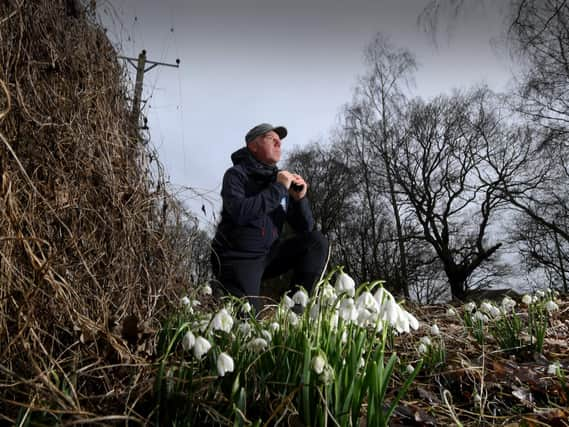Wildflower tours in Yorkshire sell out following boom in interest in region's native flowers


Such sights in the countryside have become increasingly rare, conservationists warn, with some 97 per cent of British meadows estimated to have disappeared since the 1930s.
Now, as wildflower safaris are launched across Yorkshire, experts say there is a dizzying shift as communities' interest booms.
Advertisement
Hide AdAdvertisement
Hide AdBritain's native blooms has never been more treasured, they say, as campaigns gather pace over calls to let wildflowers pave their own way.
"Nature is far more powerful now," said Richard Baines, ecologist and wildlife guide with Yorkshire Coast Nature which has launched a series of summer wildflower tours.
Within the first five days of being launched the safaris all but sold out amid a boom in interest in the names and the habitats of the region's native flowers.
"People really want to see these spaces, and these special wildflowers," said Mr Baines.
Advertisement
Hide AdAdvertisement
Hide Ad"So many things in life go in circles, and this reconnection takes us back to our grandparents' age. We appreciate that more than ever before - maybe because we did start to lose it."
There is a rising tide of recognition over the boost that wildflowers can bring, to pollinating insects but also in enjoyment of blossoms that brighten up the countryside.
Last spring many local councils paused or delayed the traditional mowing of roadside verges under lockdown with the result being a riot of colour.
Some 70 per cent of councils are now using similar schemes to support flowers spread, analysis revealed earlier this month (Feb), or even sowing perennial meadows.
Advertisement
Hide AdAdvertisement
Hide AdThere has been a change in attitudes as to how people want to see road verges managed, charity Plantlife has said, with a growing grassroots desire for wilder verges.
Plantlife has long campaigned for verges to be cut less and later, with a surge in petition signatures over recent weeks bringing the number of people backing it to over 126,000.
"As folks’ horizons have narrowed due to travel restrictions many have been noticing what is on the doorstep as never before," said Archie Thomas from the charity.
"Those taking daily exercise along rural lanes have been bowled over by discovering magnificent colonies of orchids on verges."
Advertisement
Hide AdAdvertisement
Hide AdYorkshire Coast Nature, more used to bird or whale watching tours, is to launch wildflower safaris from May, exploring Yorkshire's native blooms with botanists and experts.
Some 20 per cent of funds raised will go to Yorkshire Wildlife Trust, in preserving these spaces. And while a trial tour seven years ago saw little interest, it is now booming.
"We are blessed in Yorkshire to have such landscapes, from cliffs at the coast through to the wetlands around York, and then the upland areas in the North York Moors," said Mr Baines.
"It creates huge opportunities for a massive diversity of wildflowers, which is striking in colour and inspiring. For me, being connected to that, is a life affirming thing."
Advertisement
Hide AdAdvertisement
Hide AdIn North and East Yorkshire said Mr Baines, there are some 20 species of native orchids alone, with the first to arrive in the coming weeks.
Through the summer the grasslands will come into flower in the uplands, and the grass verges with primrose, daisies and dandelions, and the lemon yellow coltsfoot.
"The benefits to bees are really obvious, with the first flush of nectar," he said. "It brings great joy to communities.
"That can come from a wildflower meadow, or a community project," he added. "It would be so good to encourage more wildflowers in villages with community meadows.
"More than anything, that colour has been lost in the countryside in the last 50 years. "There used to be so many more diverse areas of nature, and we need that colour back